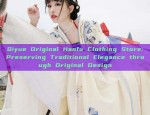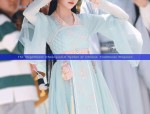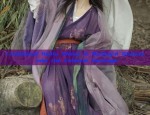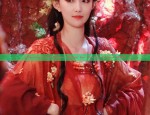The Etiquette of Qipao:Traditional Chinese Dress and Its Cultural Significance
In the realm of Chinese culture, the qipao stands as a symbol of elegance and grace, embodying centuries of fashion and tradition. This article delves into the intricacies of wearing a qipao as a ceremonial dress, exploring its significance in modern society and its underlying etiquette.

Originating in the early 20th century, the qipao (or cheongsam in some regions) is a traditional Chinese dress that has evolved over time to reflect changing fashion trends and cultural values. It is not just a garment; it is an embodiment of cultural heritage and a representation of female beauty in China.
Wearing a qipao as a part of ceremonial attire requires an understanding of its proper usage and the associated etiquette. Here are some essential aspects to consider when donning this traditional dress:
-
Selection of Qipao: Choosing the right qipao is crucial. It should complement your body shape and skin tone, reflecting your personal style and the occasion's theme. The material, color, and design should be chosen with care to ensure it aligns with the event's purpose and your personal taste.
-
Fitting and Presentation: A qipao should fit closely to the body, highlighting the wearer's curves. It should be tailored to ensure a comfortable and flattering fit. The proper way to wear it, including the placement of accessories such as jewelry and shoes, is essential for achieving a graceful appearance.
-
Timing and Occasions: The qipao is often worn during special events and ceremonies such as weddings, tea ceremonies, and cultural festivals. It is important to understand the significance of these occasions and dress accordingly. Wearing a qipao to an inappropriate event may not only miss the mark but also raise eyebrows.
-
Accessories and Complementaries: The qipao is often paired with traditional accessories such as jewelry, fans, and handbags. These accessories add to the overall elegance of the outfit and should be chosen with care. The style, color, and material of these accessories should complement the qipao, enhancing its beauty rather than competing with it.
-
Posture and Behavior: Wearing a qipao is not just about the dress; it's about carrying yourself gracefully. Proper posture is essential, as is maintaining a calm and collected demeanor. The qipao accentuates the female figure, so it's important to move with confidence and ease, avoiding any awkward or overly sexualized movements.
-
Cultural Sensitivity: The qipao is a highly cultural garment that holds significant historical and cultural value. When wearing it, it's essential to be mindful of its cultural significance and show respect for its heritage. Avoid any behavior that may tarnish its reputation or misrepresent its cultural value.
In conclusion, wearing a qipao as a ceremonial dress is not just about fashion; it's about understanding and respecting a rich cultural heritage. Understanding the etiquette behind this traditional dress helps you present yourself gracefully and appropriately, ensuring you make a memorable impact at any event. As you embrace this beautiful garment, remember to honor its history and culture while showcasing your own personal style.
The qipao continues to evolve and adapt to modern times, becoming more versatile and wearable for different occasions. As it does so, it remains an integral part of Chinese culture, representing elegance, grace, and tradition worldwide.

 Previous Post
Previous Post









